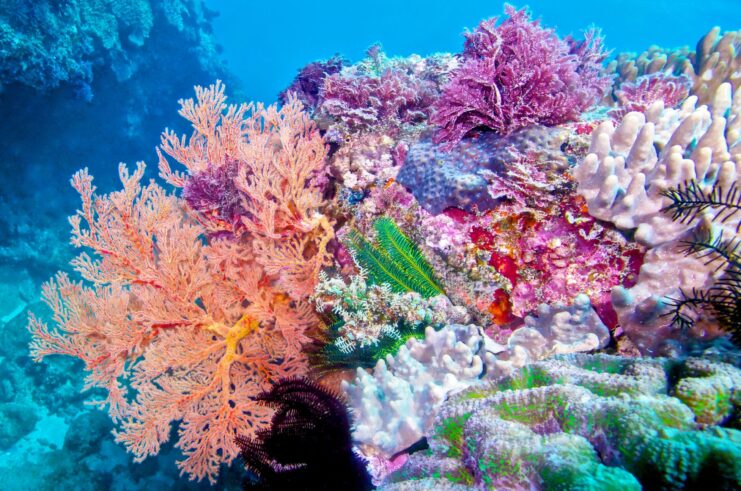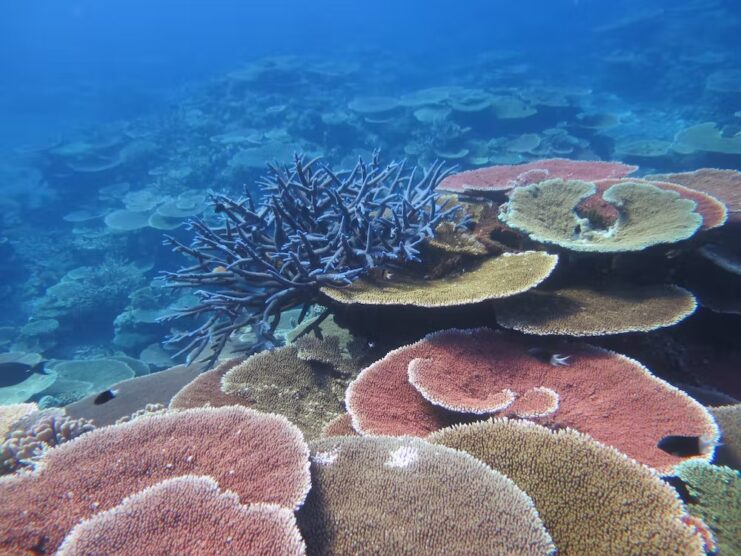- Coral reefs are among the oldest ecosystems on Earth.
- Coral reefs are the largest living structure on the planet, and the only living structure to be visible from space.
- The Great Barrier Reef (off the coast of NE Australia) is the largest coral reef in the world. It is over 1,257 miles (2000 km) long.
- Coral reefs form natural barriers that protect nearby shorelines from the eroding forces of the sea, thereby protecting coastal dwellings, agricultural land and beaches.
- Scientists are looking to coral reefs to provide critical medical compounds for use in the treatment of cancer, HIV, cardiovascular diseases and ulcers.
- 32 of the 34 recognised animal Phyla are found on coral reefs compared to 9 Phyla in tropical rainforests.1
- Occupying less than one quarter of 1% of the marine environment, coral reefs are home to more than 25% of all known marine fish species.
- Properly managed coral reefs can yield an average of 15 tonnes of fish and other seafood per square kilometre each year.
- Southeast Asia’s coral reef fisheries alone are estimated to yield US$ 2.4 billion annually.
- More than 80% of the world’s shallow reefs are severely over-fished.

- 58% of the world’s coral reefs are potentially threatened by human activity.
- Coral reefs are found in 109 countries; significant reef degradation has occurred in 93.
- From 1876-1979 only three bleaching events were recorded, whereas 60 are on record from 1980 until 1993.
- We have already lost 27% of the world’s coral reefs. If present rates of destruction are allowed to continue, 60% of the world’s coral reefs will be destroyed over the next 30 years.
- More than 450 million people live within 60 kilometres of coral reefs, with the majority directly or indirectly deriving food and income from them.
- The total economic value of Indonesia ‘s reefs is estimated at US$1.6 billion annually.
- The total economic value of Philippine reefs is estimated at US$1.1 billion annually.
- Coral reefs in the Malacca Straits have an economic value of US$563 million.
- Globally, tourism is estimated to provide US$9.6 billion in annual net benefits and a multiple of this amount in tourism spending.
- Southeast Asia is considered the global epicentre of marine diversity. Its 100,000km2 of coral reefs (34% of the world’s total) are home to over 600 of the 800 reef-building coral species in the world.
- Indonesia and the Philippines hold 77% of Southeast Asia’s coral reefs and nearly 80% of threatened reefs.












